Sorting
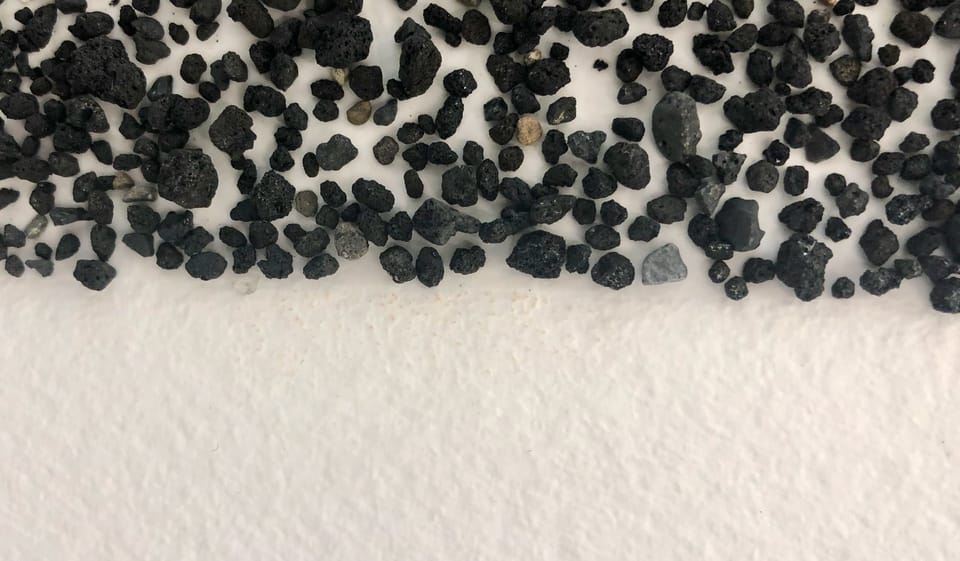
In the Reykjavik Art Museum at Hafnarhús there was, when I first visited with my brother in 2018, a room given over to two sculptural installations by the Icelandic artist Ragna Róbertsdóttir (b.1945).
Two installations, or a single installation, perhaps. And are they sculptural, in fact? They are barely three-dimensional (unless, that is, they are a single installation). In an otherwise empty room, one wall is given over to a geometrically severe scatter of black lava; the other is given over to a barely visible but mirroring shadow of near-clear glass.
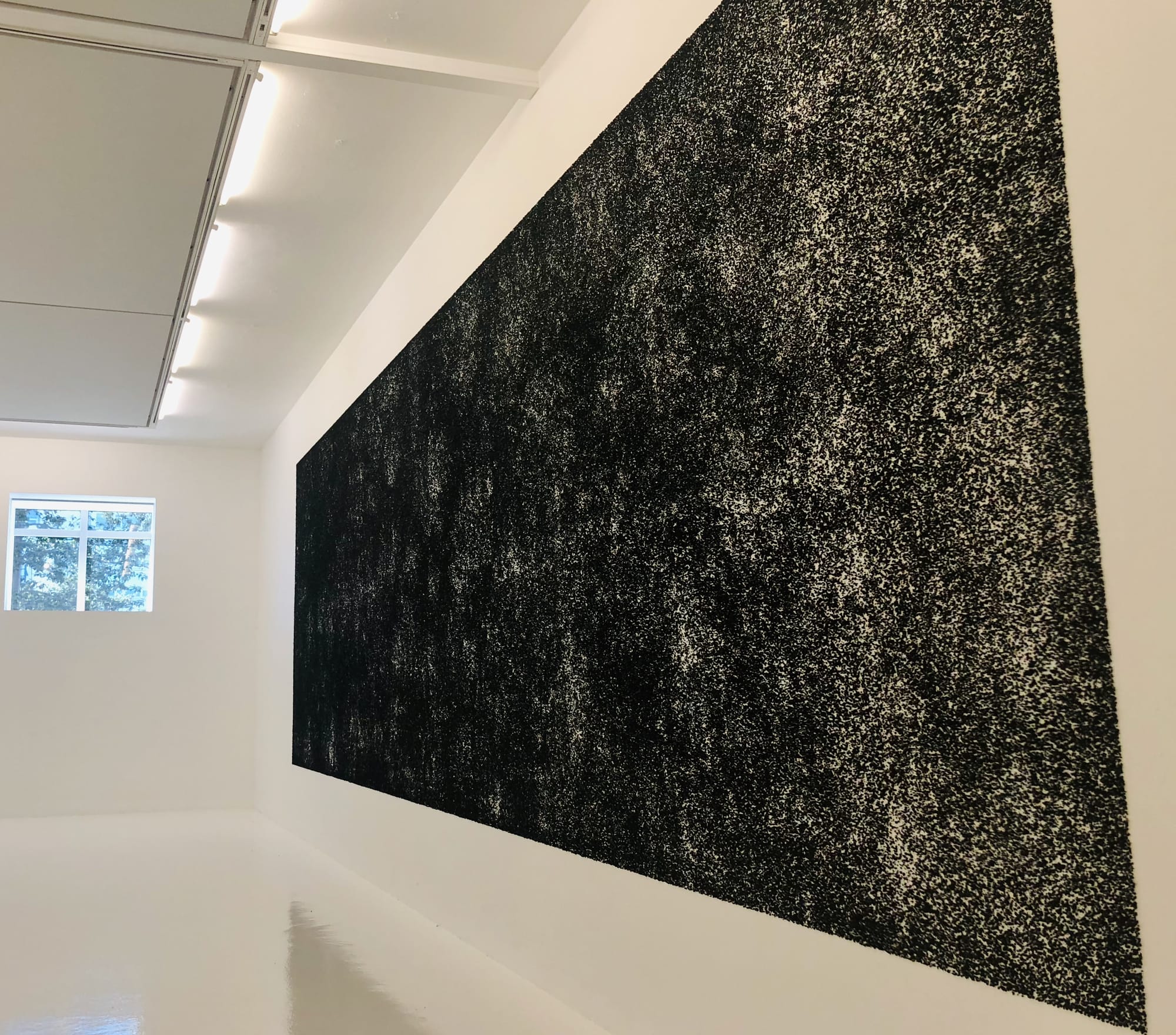
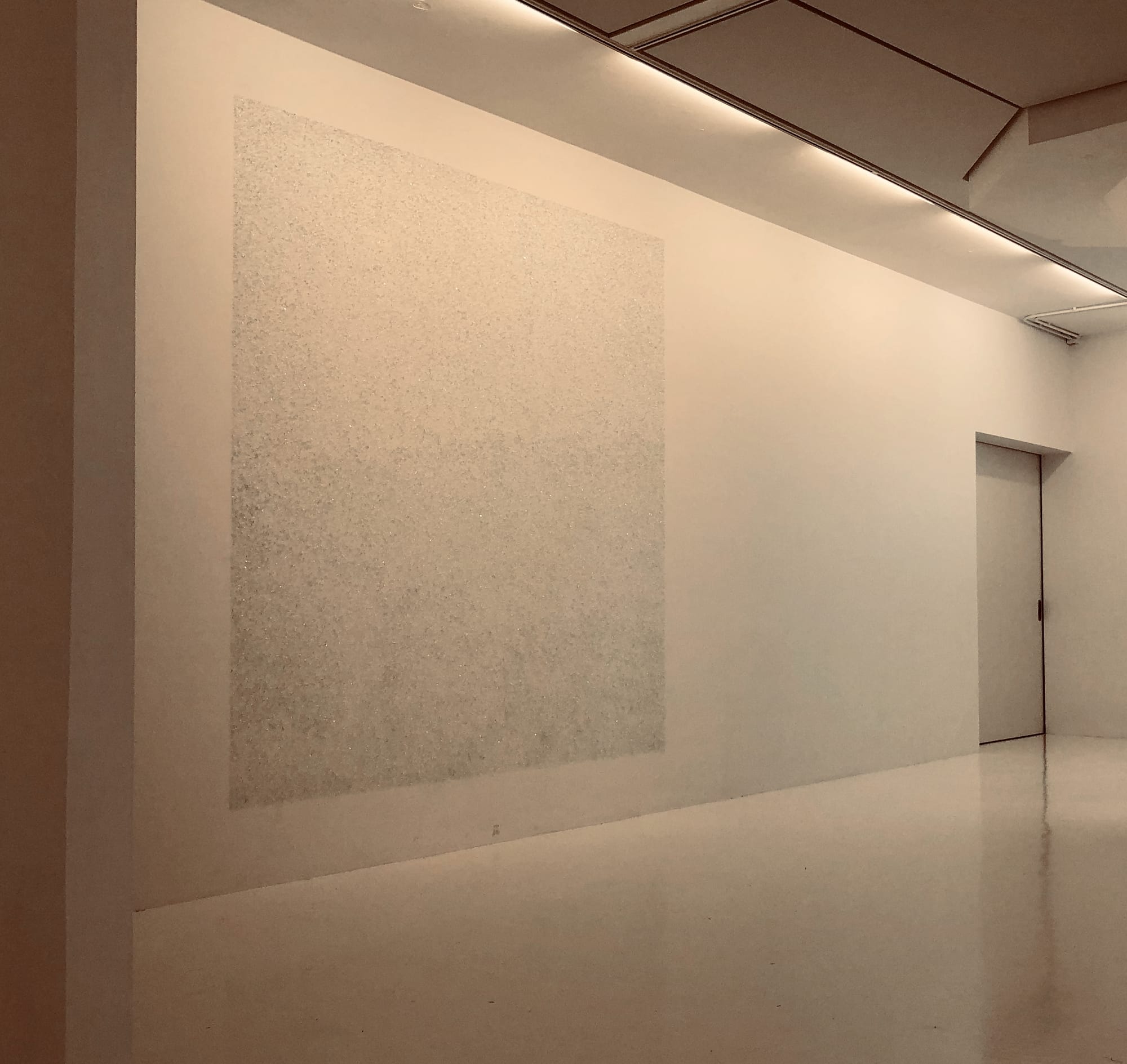
The volcanic minerals she uses are indigenous to Iceland. But Róbertsdóttir is clear that the lava wall installations are not just drawing on landscape or natural forms. After the war, the new-built concrete houses of Reykjavik were similarly smattered with small chips and stones, and notably the National Theatre, a brutalist, slightly dwarfish, concrete structure opened in 1950, has walls glinting with fragments of the mineraloid obsidian.
The installation, in other words, is a severe abstraction both of the violent upheaving land of her birth, and of its bourgeois settlement.
...
There exists a short video in which Róbertsdóttir is pottering around in her studio, and we get a glimpse of her rigorous sorting of the materials with which she works—lava, pumice, sand, clay, salt, shell, shell sand etc.—and the order of her studio which either follows on that sorting, or is its precondition.
Her studio is immaculate; and her work is similarly characterised by stillness. In passing I would notice that the organisation of space (for some people more than for others) prepares the mind to operate with clarity, or with fire, or with anger, or with brute force, or whatever psycho-emotional mode it is that you habitually require to get your work done. Over time the space in which you work will be sifted according to your psychological defaults. And your psychological defaults will be moulded by the space in which you work.
In the early 1990s the economist Yukio Noguchi began to experiment with a new way of filing the overwhelming number of academic papers in his office.
His was a notably chaotic space, in which piles of research papers and journals and notebooks toppled over one another. Logically, you would think, a more efficient use of space would involve some sort of filing system, a classification, whether numerical, alphabetical, or whatever. But Noguchi concluded that the most efficient system was just a non-system. He stopped trying to bring order to his space, and began to allow his space to develop its own order. His new method, or anti-method, merely required him to place whichever paper he had most recently used in the front of the nearest box to his desk. In this way, over time, more frequently used papers would work their way to the front of the nearest boxes; what he needed most often lay closest to hand; and while from time to time he would need to search for a rarely-used item, the time saved in not bothering to sort his materials would easily outweigh the loss of time given over to occasional searching.
At around the same time, designers of digital storage devices, hard drives and so on, were reaching the same conclusion. Search beats sort. Toss your books anyhow on to your shelves, your plates and cups and utensils anyhow into your cupboards, your obsidian and lava and shells anyhow into whatever containers in your studio, or simply over the floor, and all will sort itself. A sifting of utility, which, like the solifluction of permafrost stones, renders your world at once both functional and impersonal.
There is a catch, however.
Mess, for people who are not Noguchi, is stressful. A constant disorder of things in motion. An unsettlement of the physical world. Energising, in some instances, but ultimately (for a sensitised mind) overwhelming.
Róbertsdóttir is, from a certain perspective, distilling the quiet order of her art from the psychological necessity of her space, the one just a projection of the other. If she were to clear her space entire, the art would merely, and gently, stop.
...
You can watch Róbertsdóttir on YouTube, making one of her lava wall installations. She crouches in front of the wall, which is sticky with an adhesive of some sort, and tosses loose handfuls of lava chips in dense clusters from short range. Some adheres, some falls back, and she scoops up fresh handfuls and tosses more and more of the chips.
She then removes some of the chips with a pair of cosmetic tweezers, tidying up the boundaries. Because, for all that this seems a freewheeling, aleatory process, the space in which the chips are thrown is precisely measured and bounded. Strips of yellow tape mark out where the wall stops and the lava starts.
It must be the case however, that what seems at first glance like a precise line, must be to the artist, her nose close to the wall, variable, a thing of points. Some of those points will be outliers, and need tidying, bringing within some tighter average. But what makes an outlier an outlier is the whole pattern, so the more outliers you remove, the more (albeit more narrowly deviant) you create. And so it goes on, the artist wrestling with fractal margins, until, satisfied or not, constrained by deadlines and gallery openings and the need to eat and drink and sleep, Róbertsdóttir settles on some arrangement or other, and abandons the piece to the public gaze.
...
My brother and I have a minor background in sorted aggregates. We grew up next door to a concrete works where my father worked. In fact he was a lighting engineer, and had nothing to do with concrete, but the company made both floodlights and streetlights and concrete lampposts.
Outside the back gate of our house there was a sloping set of concrete samplers. I walked past it every day—perhaps four or five strips of different concretes or aggregate mixes, each two-foot wide and six-foot high, sloping back at an angle of fifteen degrees or so, each concrete using aggregates of increasing fineness, some coarse like a scaled-down pebbly beach, some rough like a great strip of sandpaper, some fine like a Ragna Róbertsdóttir installation.
When we first moved there, I was eight years old, and eight-year-olds enjoy taxonomy, clear differentiation. And this after all was part of my father’s world, and at eight you do not differentiate: what is important to your father is important to the tribe. My childhood played out between glinting poles of concrete and of floodlights.
Whether because of our background in aggregates, or because Róbertsdóttir speaks universally of order and clarity, my brother and I lingered longer in that space of sorted minerals than elsewhere in the museum.
However, a footnote: my father's office and desk were notoriously, chaotically messy, overwhelmed with toppling papers and catalogues. A Noguchi space. And when I first worked in offices many years ago, my desks mimicked his: great angst-inducing piles of composting tasks and duties. Now though, for reasons I do not fully understand, my desk is usually a flat plane of order, only a few necessary (Noguchi) items on it. When stuff encroaches—books, papers, cups, pencils—I bear it for a while, and then sort it all away again. As though emptiness and clarity were self-same. Over time, I suppose, we diverge from our tribe. The old ways. The elders are no longer around to notice the emptiness of our desks.
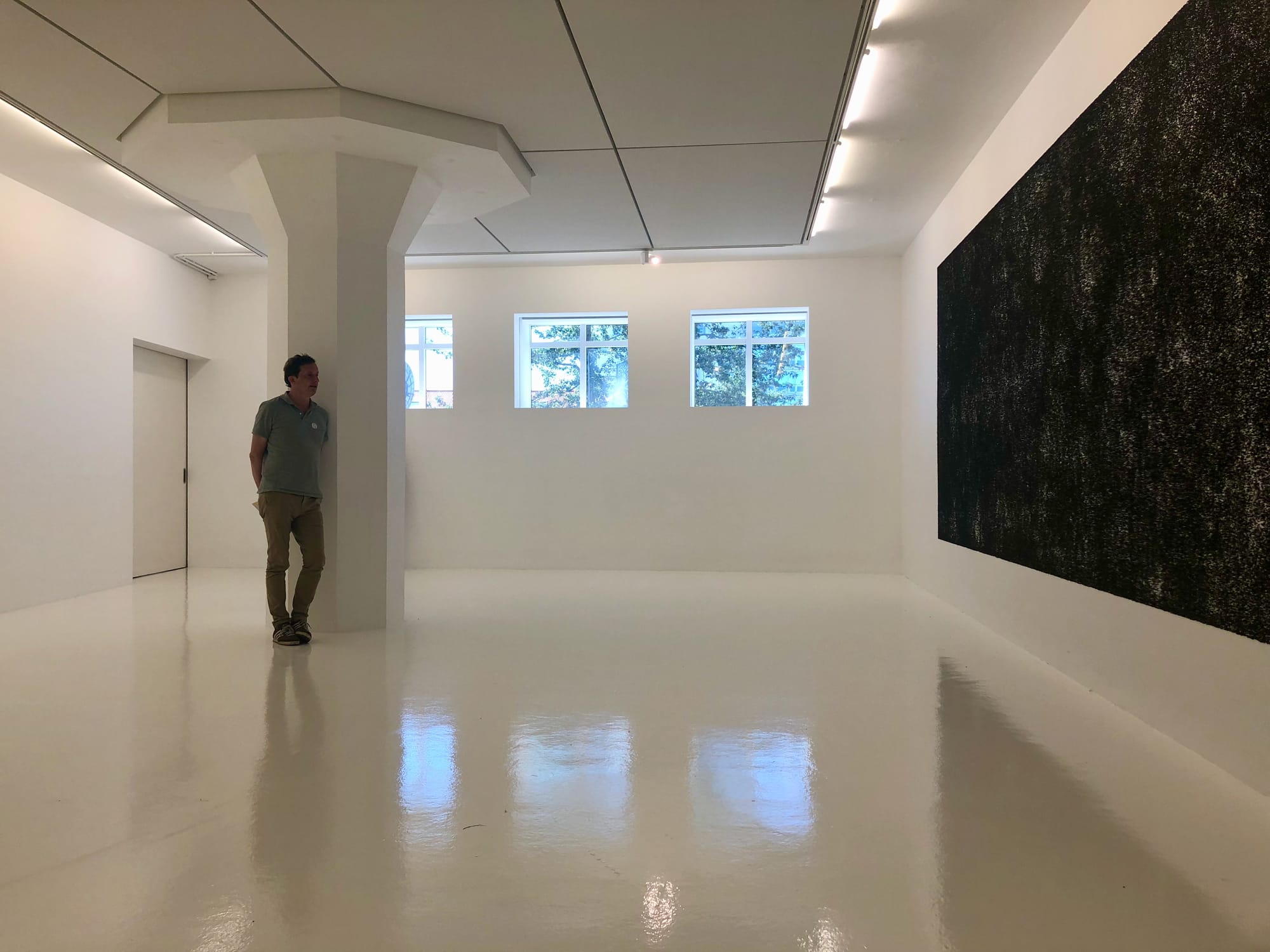

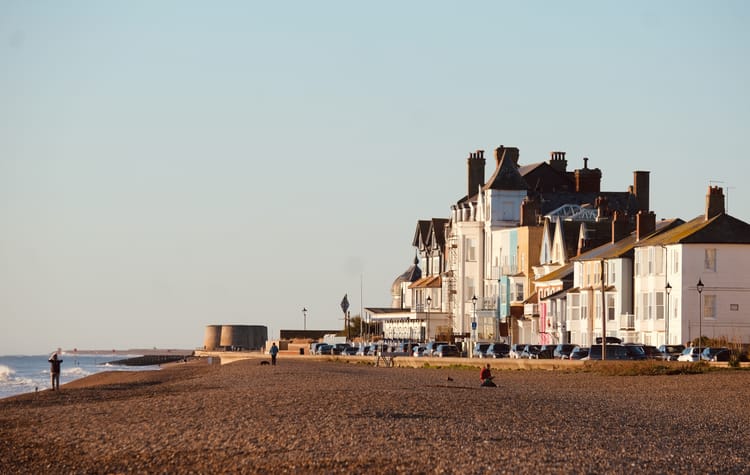
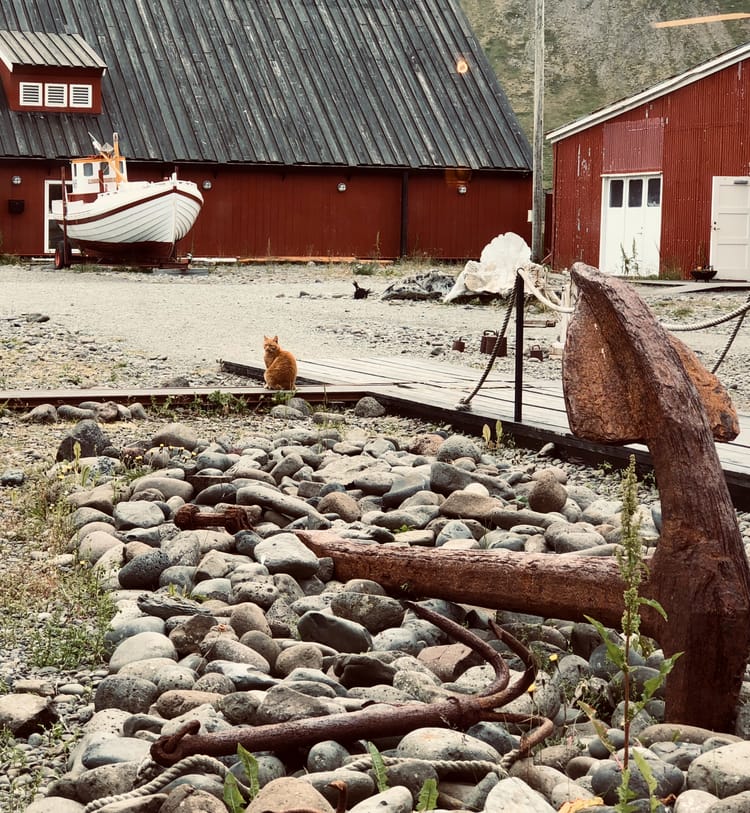
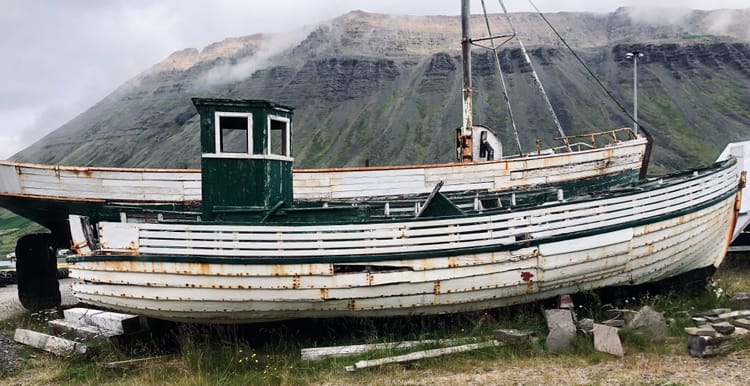

Member discussion